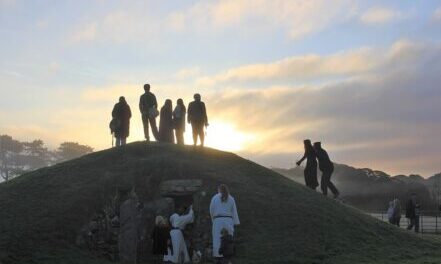
Summer Solstice
Sunrise on the day of the Summer Solstice ranges from about 3.35am to 4.45am north to south of the UK, with sunset as late as 10.30pm in the far north (the Shetland Islands). This gives roughly 16¾ to 19 hours of daylight, the longest amount of the year. The date is either 20th or 21st June (though very rarely it may be the 22nd) and it is also known as Midsummer’s Day.
Naturally enough, it is an important time in the agricultural cycle and it was widely celebrated prior to the Industrial Revolution. It is also a significant event for Pagans, who see it as a testimony to Earth’s connection to the Sun and the seasons.
Modern-day Pagans and other interested folk gather at dawn at ancient stone monuments and on hilltops for their Summer Solstice mystical experience. In fact, it will not be the earliest sunrise of the year ~ that occurs a few days beforehand and the latest sunset likewise occurs a few days afterwards. Nevertheless, on Midsummer’s Day the timings align to produce ‘the longest day’ and to be at Stonehenge, for instance, witnessing the first rays of sunshine is a moment to appreciate and feel part of Creation.
(Top image of Summer Solstice sunrise at a historic Druidic spot in Anglesey: TheJaySpearing at Wikimedia Commons / CC BY-SA 4.0)
